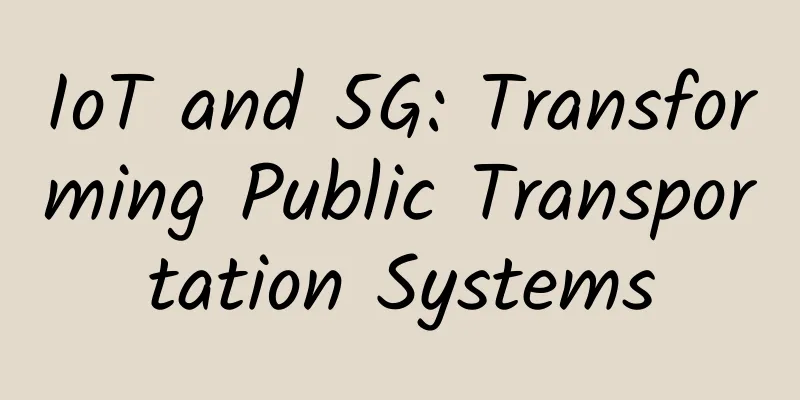Discussing the five key technologies for building 5G

|
It is widely believed that 5G mobile networks will not be available until 2020 or 2021, and even then they will not be widely available. However, as mobile data traffic continues to grow (it has grown 18 times in the past five years), it is expected that 5G will arrive sooner than ever. Forecasts show that in 2021, 5G connections will generate 4.7 times more traffic than a typical 4G connection. Figure 1 shows this growth. Figure 1 Mobile data traffic continues to grow. (Data source: Cisco) 5G will be a huge step up from today’s LTE-Advanced networks, so it’s important to examine the five key areas that will help lead the transition from 4G to 5G. Four of these five areas will enable this transition through an intermediate stage known as LTE-Advanced Pro (4.5G), making this revolution more gradual. Speed and Feed In this area, access technology will increase from 1Gbps in LTE-Advanced to 20Gbps throughput/downlink rate per area in 5G. Reaching this speed requires going through multiple stages starting with LTE-Advanced Pro. LTE-Advanced Pro is already defined in the current specification and uses a variety of technologies such as carrier aggregation (up to 32 carriers), massive multiple input multiple output (MIMO) with up to 16 antennas, and higher-order modulation schemes (256QAM as shown in Figure 2) to achieve 3Gbps. Data rates of 3Gbps can be achieved without major changes to radio technology. This is the intermediate step that every operator must take to leverage its current infrastructure and prepare for 5G in advance. Unlicensed spectrum use Currently, several major operators, including T-Mobile and Verizon, are deploying LTE (LTE-U) in unlicensed spectrum, and AT&T is actively promoting a virtual machine solution for this matter. Wi-Fi has been using unlicensed spectrum for years because licensed carrier spectrum is insufficient to meet higher throughput requirements. Wi-Fi is considered a distant cousin of cellular because, in addition to being unregulated, it is very similar to licensed carrier spectrum, and Wi-Fi is free, so until recently, quality was not an issue. Operators have begun rolling out hotspots to offload as much cellular traffic as possible to Wi-Fi, thus putting additional pressure on the network. However, Wi-Fi has a lot of unlicensed spectrum that can be used by LTE. This was generally acceptable in residential environments in the past because end customers and operators were not overly concerned about the quality of this “free service.” However, over the past few years, this mentality has changed due to technical improvements in Wi-Fi technology for better quality and standardized access:
Figure 2 256QAM is a technology that 5G will use to increase data rates. Extending the concept of carrier aggregation to unlicensed carriers (the same spectrum used in Wi-Fi) would provide operators with more options for increasing cell bandwidth. In addition to finding ways to offload billions of Internet of Things (IoT) devices, 5G networks will need to leverage the vast resources of spectrum in today’s unlicensed spectrum, as well as new resources that will be released, to enable ultra-high-speed access needs. IoT devices IoT devices present a variety of requirements and challenges:
Handling IoT devices at the same time as regular cellular devices like smartphones is a daunting task for access and core networks. Starting this task now with LTE networks will allow for a smoother transition when 5G networks arrive. For example, Nokia, Sprint, and Verizon are just a few of the big companies that started testing 5G this year, and many operators claim they will start testing 5G networks "soon." Virtualization: Network Function Virtualization (NFV) and Software Defined Networking (SDN) The benefits of virtualization in terms of saving operators costs, handling network flexibility requirements, and increasing operator choice are very clear. 5G networks, due to the extreme demands at both ends of the spectrum (including occasionally sending a few bytes and a huge increase in data volumes for different use cases), create a strong demand for combining with virtualized network functions (Figure 3). Figure 3 NFV slices the core network based on the type or data it will transport. Many operators are about to adopt virtualization technology for their networks, especially the packet core network. The packet core network side is all based on the Internet Protocol (IP). This means that in a similar way to data center virtualization, the wireless packet core network side (from 3NodeB to the Internet) can also be virtualized. Even on the access side, the split between underlying protocols, which ones stay at the edge and which ones move into the central core, is currently being discussed and decided by industry decision makers in the field of network equipment manufacturers (NEMs). To meet the needs of different user devices, the industry is now moving towards virtualization and network segmentation, which will be helped in the deployment of 5G networks. New Air Interface (NR) The new 5G air interface has not yet been standardized and will require a new radio access technology to increase speeds to 20Gbps. It requires the use of new millimeter wave (mmWave) frequency bands, which are between 30G and 300GHz that can send and receive data through the air at very high speeds. Each cell bandwidth is expected to be between 10 and 20Gbps, and each user may get 1Gbps, which is required for applications such as advanced augmented reality (AR)/virtual reality (VR). The 5G New Air Interface is one area that belongs to true 5G. The other four areas all have a solid starting point in the LTE-Advanced Pro specification and are therefore more evolutionary. After the 2017 Mobile World Congress (MWC), at the 3rd Generation Partnership Project (3GPP) meeting in Dubrovnik, Croatia, the industry unanimously pushed for the release of 5G specifications, and brought forward the release date of some specifications from June 2018 to the end of 2017. The two big things discussed in the 5G new air interface are support for flexible underlying OFDM technology and support for massive MIMO to enable the use of millimeter wave spectrum. This flexible underlying OFDM technology can provide multiple services such as high-bandwidth video applications and low-latency mission-critical applications to different users in the same cell at the same time. 3GPP discussed OFDM based on scalable numerology and scalable transmission time interval (TTI) - the time interval at which users get data. While the mass shift to 5G is still in its early stages, the areas mentioned above will be the main keys that will lead us towards this transformation. |
<<: Five IoT business models that will make you profitable
>>: Seven tips to help you successfully perform a domain controller network migration
Recommend
Ministry of Industry and Information Technology: By the end of 2021, more than 600,000 new 5G base stations will be built and more than 20 gigabit cities will be built
[[390193]] On March 24, the Ministry of Industry ...
Let’s talk about the Vrrp protocol?
[[374759]] This article is reprinted from the WeC...
Provincial and municipal government cloud services help "Smart Jiangxi" take a new leap forward
In the history of the development of the Chinese ...
Finally! Huawei officially announced that it will start collecting 5G patent fees, Apple and Samsung will have to pay...
Yesterday (March 16), Huawei stated at the "...
[Double Holiday] edgeNAT: VPS monthly payment 30% off, annual payment 40% off, US/Hong Kong/Korea CN2 VPS monthly payment starts from 42 yuan
2023 is coming to an end. edgeNAT is offering a s...
Looking at 5G from a different perspective: Don’t talk about technology, talk about demand
[[280015]] 4G changes life, 5G changes society. W...
The large-scale replication of 5G private network applications urgently needs policy support
Since the license was issued on June 6, 2019, my ...
An automation-first approach to network predictability
An automation-first approach is one of the most e...
How to quickly develop killer applications? Which will have a greater impact on the market, 5G or edge computing?
[[269430]] Is edge computing the first new trend ...
HostDare adds NVMe disk CN2 GIA line VPS, 15% discount starting from $30/year
After HostDare launched the Los Angeles NVMe SSD ...
User complaints have dropped significantly, so why can’t operators smile?
[[403552]] This article is reprinted from the WeC...
F5 creates “applications that are aware, controllable, and adaptable” to help enterprises achieve extraordinary digital experiences
On December 16, 2020, F5 held an online press con...
China's 5G users account for more than 70% of the world's total
The latest data from the Ministry of Industry and...
China Mobile's 10-year old users will enjoy four major privileges. Netizens: How can China Unicom put its face?
For a long time, the relationship between the thr...
Operators are cutting marketing expenses, so how can agents survive?
Although the scale of mobile phone users has long...









